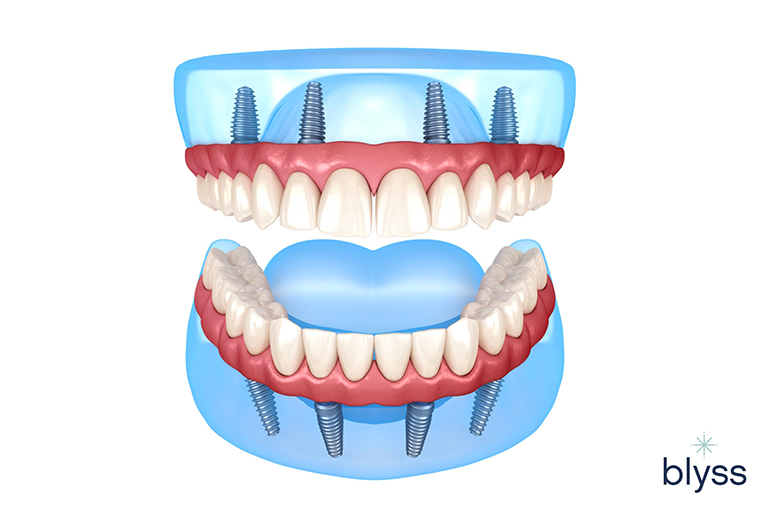Getting My Dental Sense To Work
Getting My Dental Sense To Work
Blog Article
A Biased View of Dental Sense
Table of ContentsDental Sense Fundamentals ExplainedThe Dental Sense PDFsAll About Dental SenseSome Of Dental Sense
are clinical devices operatively implanted into the jaw to bring back an individual's ability to eat or their look. They provide support for fabricated (phony) teeth, such as crowns, bridges, or dentures. When a tooth is lost due to injury or disease, a person can experience problems such as rapid bone loss, defective speech, or changes to eating patterns that lead to pain.Oral implant systems are composed of an oral implant body and oral implant abutment and may also include a joint addiction screw. Professional teeth whitening. The oral implant body is operatively inserted in the jawbone instead of the tooth's root. The dental implant joint is normally connected to the dental implant body by the abutment addiction screw and prolongs through gums right into the mouth to sustain the attached man-made teeth
(https://www.provenexpert.com/dental-sense/)Structure of The Dental Implant System selecting dental implants, speak with your dental provider concerning the potential benefits and risks, and whether you are a candidate for the treatment. Things to take into consideration: Your total wellness is an important consider determining whether you are a good prospect for oral implants, how much time it will certainly require to recover, and the length of time the dental implant may stay in area.
Smoking might influence the healing procedure and lower the long-lasting success of the implant. The recovery procedure for the implant body might take several months or longer, throughout which time you commonly have a temporary joint instead of the tooth. the oral implant treatment: Carefully follow the oral hygiene guidelines offered to you by your oral copyright.
Not known Facts About Dental Sense
Implant failure can result in the requirement for one more medical treatment to take care of or change the dental implant system. Brings back the ability to chew Restores cosmetic look Aids maintain the jawbone from reducing as a result of bone loss Preserves the health and wellness of the bordering bone and gums Assists keep adjacent (close-by) teeth steady Boosts lifestyle Damages to surrounding natural teeth throughout implant placement Injury to the surrounding cells during surgery, such as sinus perforation Injury throughout surgical treatment (as an example, fracture of bordering jawbone) Insufficient feature, such as feeling like the teeth do not bite together generally A sensation that the tooth is loose or twisting in location arising from a joint screw loosening Implant body failing (looseness of the implant body) as a result of systemic infection, which may be most likely in patients with unchecked diabetes mellitus due to local infection in bone and gums sustaining the implant body because of delayed healing, which might be more probable in individuals that smoke Difficulty cleansing the gum tissues around the implant, leading to inadequate oral hygiene Unattended gum disease Post-surgical pins and needles because of nerve impingement or damages Constantly alert health and wellness care suppliers and imaging technicians that you have oral implants prior to any magnetic resonance imaging (MRI) or x-ray procedures.
FDA is not mindful of any damaging occasions reported for MRI or x-ray procedures with dental implants. Dental implants systems are generally constructed from materials that comply with global consensus requirements of the International Company for Standardization (ISO) or ASTM International. These criteria have details of what makes a secure product.

A dental implant is a structure that replaces a missing out on tooth. With screw-like devices, the cosmetic surgeon inserts an implant right into the jawbone, and it acts as a support for a fabricated tooth, called a crown.
Unknown Facts About Dental Sense
Some people are not qualified for oral implant surgical treatment. It is for dental specialists to operate people with: severe illnessuncontrollable metabolic diseasebone or soft tissue illness or infectionIf these issues are solved, a person can have the surgical treatment. In, dental doctors abstain from operating individuals with: If individuals with any one of the above go through oral implant surgery, there is a greater risk of the dental implant falling short.

Oral dental implant surgical treatment is a customized procedure. It's not the exact same for everyone. The adhering to gives a check it out general introduction of what you can anticipate your dental professional, dental cosmetic surgeon, periodontist or prosthodontist to do: Position the dental implant operatively. Provide you time to recover. Connect the message and last crown, bridge or denture.
Next off, your doctor will meticulously put the oral implant into your jaw. Ultimately, your surgeon will reposition your periodontals and close the laceration with stitches. If your implant is near the front of your mouth, your dental practitioner will certainly make a temporary tooth for you to wear until you heal. In this way, you won't have a space in your smile while you recuperate.
The Best Strategy To Use For Dental Sense
During the recovery stage, your jawbone needs to fuse to the dental implant. This process can take anywhere from three to nine months.
As soon as your implant heals, your dentist can affix the joint (little adapter post) and your final restoration (crown, bridge or denture). This usually takes concerning one hour to finish and may need a 2nd small surgical treatment. You should not feel any kind of pain throughout your dental implant treatment since your supplier will use medication to numb your gums.
Report this page